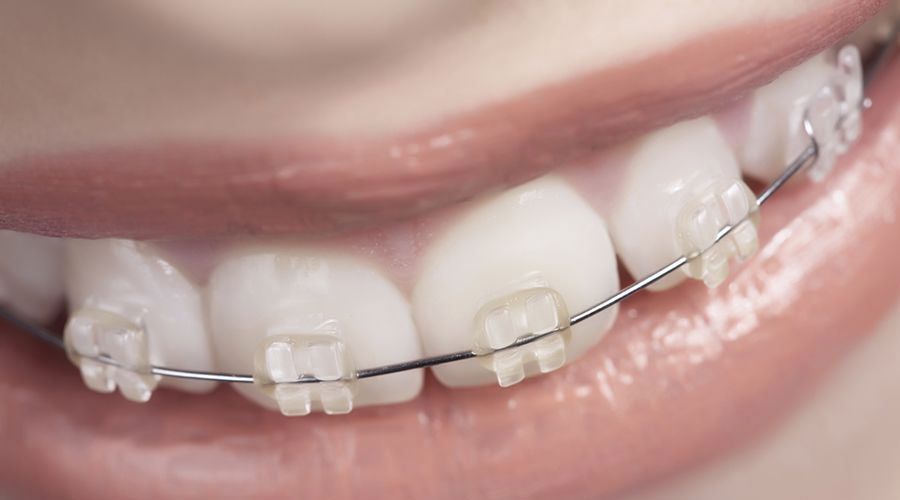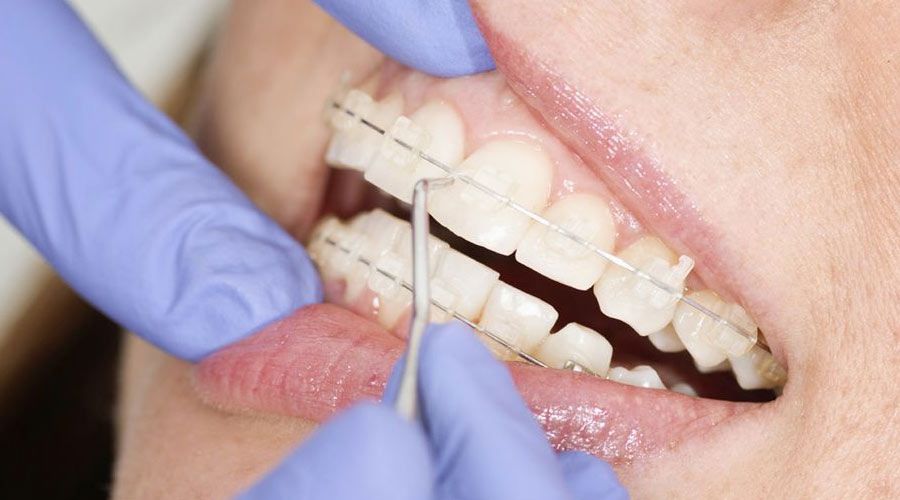Clear Braces
In the past, every orthodontic patient was required to wear metal brackets and wires to straighten their teeth. With advances in orthodontia, patients now have the option of clear braces, which can more discreetly and often more comfortably improve alignment. There are several types to choose from, including clear aligner trays that fit snugly over teeth and translucent brackets and tooth-colored wires. The right form for you will depend on your health, lifestyle, and budget.
Candidates for Clear Braces
The severity of misalignment will impact your options. Minor to moderate concerns can be effectively corrected with aligner trays. However, extensive jaw-related malocclusion is better suited to traditional braces. You may qualify for clear braces if you have:
- Crooked or overlapping teeth
- Gapped teeth
- Rotated teeth
- An overbite
- An underbite
- An open bite
- A cross bite
While clear braces are appropriate for patients of all ages, treatment is increasingly popular among teens and adults.
Tooth-Colored Brackets

Clear braces offer a more discreet way to straighten your smile.
Clear Aligner Trays
Translucent aligner trays are custom-made and fit comfortably over the upper or lower dental arch. Each patient will receive a series of trays, which vary slightly in shape. Every few weeks, patients will graduate from one set of aligners to the next, which will gradually shift teeth into their proper position. There are several brands of aligners to choose from.
- Invisalign® is perhaps the most well-known option. Invisalign aligner trays are made from multilayer SmartTrack® material, which is virtually invisible. Younger patients can benefit from Invisalign Teen®, which features blue indicator lights that fade when used as directed. Patients who need only minor orthodontic adjustments can benefit from Invisalign Express®.
- ClearCorrect™ is similar to Invisalign, in that it features clear aligner trays made of smooth plastic material. Treatment involves four phases, and aligners are worn for three-week periods.
- Red, White & Blue is ideal for those who want to correct minor to moderate spacing issues in their front teeth. Manufactured by Allesee Orthodontic Appliances, this system features three custom-made aligners. Each is marked by a red, white, or blue dot to indicate the order in which trays should be worn. With fewer aligners, treatment often costs less than other options.
- Simpli5 is an extension of the Red, White & Blue system, and it comes with five aligner trays. If needed, patients are eligible for two extra trays to enhance the final results.
- MTM® Clear•Aligners are also intended for patients who need a slight orthodontic adjustment. MTM stands for “minor tooth movement.” The trays are created with special “force points” that target pivotal locations on the dental arches. These aligners can often achieve desired results in as little as three to six months.
Removable aligners require discipline and motivation, and patients who opt for clear aligners must take responsibility for their care. You must be able to commit to wearing you trays for 20 to 22 hours each day, and only remove the trays when you eat or brush your teeth.
Standard Braces with Clear Brackets
For patients who have pronounced malocclusion, clear aligners may not be an effective solution. However, clear brackets and tooth-colored ceramic wires can provide an alternative. There are several brands on the market.
- Damon® Clear™, manufactured by Damon™ Smile, consists of virtually transparent brackets and wires. These innovative braces are self-tightening, so you can visit your dentist’s office less frequently. In addition, many patients find these braces to be more comfortable, since the brackets are equipped with a proprietary slide mechanism.
- Six Month Smiles® can correct minor to moderate orthodontic issues affecting the front teeth. The force of the wire is carefully calibrated to move teeth more quickly, so treatment can usually be completed in just six months. Thanks to the precise regulation and gentle movement, Six Month Smiles can be more comfortable than other types of braces.
Your dentist can recommend the most appropriate solution for your needs.
Applying Braces

The dentist can bond the brackets to the surface of your teeth and thread an arch wire through each.
What to Expect during Orthodontic Treatment
The treatment process will depend entirely upon the form of braces you select. If you opt for clear aligners, your dentist will first need to take impressions of your smile, which will be sent to an dental laboratory. There, these molds will be used to fabricate your aligner trays. In many cases, your doctor can use digital software to create a simulation of your results, so you can preview your new smile.
If you prefer clear-bracketed braces, your doctor will use dental cement to secure the brackets to the surface of your teeth. The ligature wire will then be threaded through each bracket. Your dentist may be able to choose the shade of wire that blends seamlessly with your smile.
The Advantages of Clear Aligners
Clear aligner trays are becoming one of the most popular orthodontic treatments, especially because they can now address a wider range of issues. These trays offer several noteworthy benefits.
- Aligners are more subtle than any type of bracket. Your friends or coworkers may not even notice you are wearing aligners, even when standing at arm’s length.
- Whereas metal brackets can irritate the inside of the lips and cheeks, clear aligners are smooth and more comfortable.
- Aligners can be removed to eat, so you will not have any dietary restrictions during treatment. It is also easier to brush and floss your teeth. Simply remove the aligners beforehand.
- If you are very active, blunt metal brackets can place your lips cheeks, and gums at risk. Clear aligners, on the other hand, will not jeopardize your smile in the case of an accident.
Of course, those who do not qualify for aligner trays can still enjoy subtle and effective care with other types of clear braces.
The Importance of Orthodontic Care
Orthodontia can improve not only the aesthetics of your smile but also your oral health. Crooked, gapped, or rotated teeth are more difficult to clean. As a result, they tend to collect more debris and harbor bacteria. Straighter teeth are easier to maintain, reducing your risk of serious conditions such as gum disease and tooth decay. Additionally, when the force of your bite is evenly distributed across your dental arches, your risk of cracked teeth, dental erosion, and temporomandibular joint (TMJ) disorder also decreases. In cases of severe misalignment, patients may even find it easier to bite and chew after treatment. Speak to your doctor to find out how you can benefit from clear braces.
